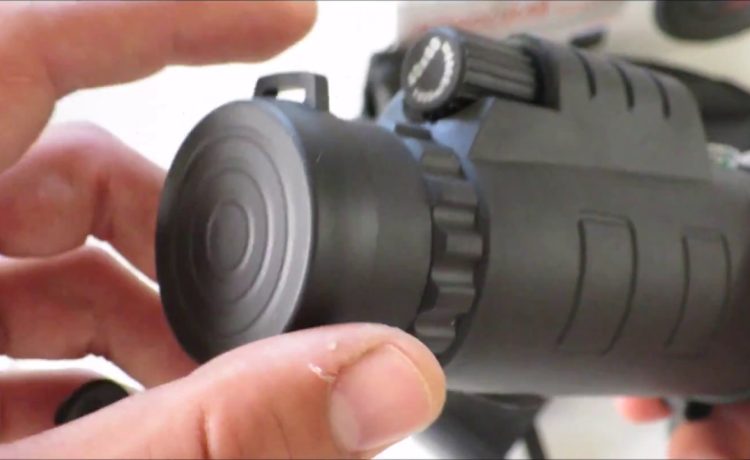If you own a monocular, you might be wondering how to use it to its fullest potential. The good news is that there are a number of ways to go about making the most out of your new purchase.
Cleaning a monocular
Keeping your monocular clean is a good way to ensure a clear view of the subject you are viewing. However, this can be a daunting task for some people. Luckily, there are some simple tips that can help you get the most out of your optics.
One of the easiest ways to keep your monocular in tip-top shape is to keep it in a storage case. This will prevent dust and debris from getting inside. Additionally, you will be able to keep your lens and binocular housing dry and protected.
To clean your monocular, you will need a microfiber cloth and an optical cleaning fluid. You may also need to use a special lens blower.
For the best results, it’s important to select a high-quality microfiber cloth. It’s also recommended that you keep your cloth in an air-tight bag so that it won’t be easily damaged.
Also, remember that while a lens cleaning solution may be helpful, it’s best to avoid using it directly on your lenses. In many cases, it can cause microscopic scratches.
When cleaning a monocular, you should always wear eye protection. Otherwise, you could damage the lens or make the process more difficult.
Another helpful cleaning tool is a small soft-bristle brush. You can even use a paintbrush or make-up brush to clean out the dirt and dust.
If your monocular has a special coating, you may need to use a cleaner than the standard microfiber cloth. A fabric softener can leave streaks on a lens, and a window cleaner might scratch the coating.
Stargazing
When you want to go stargazing, it is essential to get a monocular with great magnification. This will ensure that you can view distant objects clearly.
Monoculars are easy to carry, and they are less expensive compared to binoculars. They are also compact. If you are looking for a good monocular to use for stargazing, there are several models to choose from. But before you purchase a monocular, you have to consider a few factors.
The first thing you should look for in a monocular is the quality of the lens. High-quality lenses will allow enough light to pass through the lens, resulting in bright images and clear videos.
Another factor you should consider is the size of the monocular. A large monocular will not be convenient to carry and will make portability a problem. Therefore, you should consider choosing a compact monocular for your stargazing.
Whether you are a casual stargazer or a professional, there is a monocular model for you. Some models are small and lightweight, while others are bulky and unwieldy.
The quality of the lens and the focal length of the monocular will determine the clarity of the image. However, you should never stare at a target directly with your monocular. That can damage the lens.
If you are not familiar with all-optical devices, it can be difficult to determine which model is best for your stargazing. Fortunately, there is a comprehensive buying guide to help you find the right monocular.
Hiking
A monocular is a small, portable device that allows you to magnify distant sights. It can be useful for tracking a moving object, watching wildlife, and taking photos from afar.
Monoculars can also be used for night time viewing. Night vision monoculars are used by military personnel and some hunters. They use different wavelengths to illuminate distant objects at night. Some also contain an invisible redlight to keep animals from being blinded.
To get the best of both worlds, opt for a monocular with a tripod mount. The tripod mount is a good way to keep your hands free while you take in the view.
While choosing a monocular for hiking, consider its size, weight, and magnification. You can also find models that have waterproof coatings to prevent internal fogging.
Most monoculars are made of plastic, glass, and synthetic rubber. Many also have protective coatings, such as rubber armor. These materials make them less likely to break, even when dropped.
Another benefit of a monocular is that you can store it in a pocket or purse. This makes them easy to take with you on a hike, and they can help to improve your visual perception.
Monoculars are also easy to pack and transport. If you want to go the extra mile, you can attach them to a smartphone. However, you need to choose a monocular that has a quality image.
Birding
Monoculars are one of the best tools for bird watching. They help you see more detail of a target, which can be difficult to do with binoculars. If you’re planning to use a monocular, there are a few things to keep in mind.
When choosing a monocular, you should consider its magnification, weight, and quality of optics. Most are suitable for use while wearing glasses. A 21mm eyepiece is large enough to enjoy a decent view at night.
The monocular shopper should also look for a lighted lens, an O-ring-filled rubber shell, and a waterproof construction. All of these features will make sure the monocular survives any weather.
It’s always best to choose a monocular that has a quick-align smartphone holder. This is because it makes it easy to attach your phone to the monocular. Another feature you might want to look for is an HD video recording function.
Generally, monoculars are cheaper than their binocular counterparts. In addition, they can be mounted on a tripod. This will help you avoid arm fatigue when you’re out bird watching.
You should also get a pair of monoculars with multi-coated lenses. These will help reduce glare and increase contrast. However, you might want to stick with binoculars if you’re looking for a more immersive viewing experience.
One of the main uses for a monocular is to capture photos. To do this, you’ll need to keep the camera focused on a target. Luckily, many monoculars can do this for you.
Infrared
Infrared night vision monoculars are useful devices that can help you identify objects in the dark. However, they’re not suitable for every user. You should choose one that has a good magnification, a wide operating temperature range, and a long detection range. It’s also important to look for smart features.
An infrared monocular comes with adjustable infrared lights that let you see objects at a distance. They are powered by small AA or N-cell batteries. These are also rechargeable, which means they’re environmentally friendly.
A typical infrared night vision monocular has a 3W infrared LED. This can provide a clear image at a distance of 656 feet (200 meters). If the environment is dim, you can use the 9 brightness levels to adjust the device.
Night vision monoculars are also useful in the daytime. They allow you to determine whether or not there’s enough light to illuminate a campsite. They also have a camera and video recording functions.
Thermal monoculars are more expensive than night vision devices. But they offer more functionality, such as digital zoom. Some have integrated laser pointers to help you spot suspects safely. And some even come with a thermal app, which you can download on your Android phone.
If you want a monocular that can help you find game animals, you may want to consider Bushnell’s Z series. Its Wi-Fi capability allows you to share your footage with others.
Take good care of your monocular
Monoculars are a useful tool for many activities. They can benefit amateur astronomy, watching wildlife, or even tactical use. Taking good care of your monocular is important for keeping it in good shape. Here are some tips to ensure your device remains in optimum condition.
First, keep your monocular in a case. Ideally, your monocular should be stored in a sealed, watertight bag to avoid damage. If you plan on storing it in a non-waterproof bag, make sure to close it when not in use.
Always wear your monocular correctly. This will prevent it from being accidentally dropped or damaged. Some models have straps that can help you carry your monocular comfortably.
It is also helpful to keep the lens cap on when not in use. Caps protect the lens from dust and dirt, and can prevent damage from wind or water.
When cleaning your monocular, it is best to avoid using a window cleaner. These types of cleaners can scratch the coating on the lenses. In order to clean them, you may need to wash them with a special solution.
Smudges on the lens can affect your vision, and a streaky coating will leave your view dimmer. Use a soft cloth to wipe away the smudges.
The monocular will help you see more in less time, but it is still important to maintain your eyesight. Several eye muscle exercises can help you to improve your binocular double vision.

